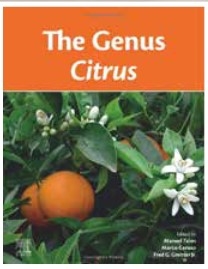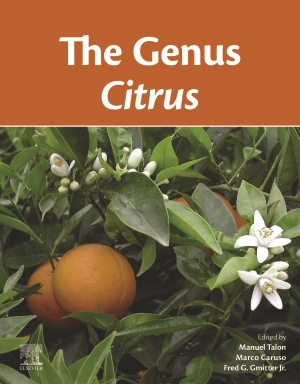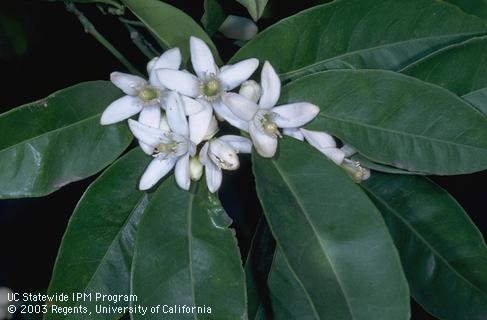Talon, M.; Caruso, M.; Gmitter Jr., F.G. eds. 2020. The Genus Citrus.
Woodhead Publishing. 538
pp. ISBN 978-0-12-812163-4.
https://doi.org/10.1016/C2016-0-
02375-6
Information overload is a signature dilemma of our age. For example, Google
Scholar displays 35,000 results for “citrus” from the past year. How can anyone keep up? To the rescue comes The Genus Citrus, a hefty tome edited by Manuel Talon, Marco Caruso and Fred G. Gmitter Jr., and written by an international dream team of contributors, offering an up-to-date overview of 24 topics from genomics to economics.
Chapter 1, “The citrus genome,” describes the rapid progress made in the past two decades in sequencing ten types of citrus, how this allows scientists to distinguish pure from admixed species and a brief but intriguing account of the evolution and domestication of mandarins. It's largely comprehensible to general readers, although many may not be familiar with every word (“pseudomolecules,” “panmictic”).
Chapter 2 integrates recent scientific articles into a readable account of citrus origins – how citrus originated on the border of China, India and Myanmar; how, when and where the various citrus types evolved and spread; and how they're related to each other. Anyone with the slightest interest in citrus should find this fascinating.
Recent genomic discoveries have sowed taxonomic confusion by confirming that many important citrus types actually are admixtures of species. Chapter 4 proposes a new trinomial nomenclature that adheres to the genetic evidence, but also incorporates familiar usage. For example, orange, Citrus sinensis in the standard Swingle system, becomes Citrus × aurantium var. sinensis L. It makes sense and is easy to use, but the official rules of taxonomic nomenclature require strict adherence to precedent, and it remains to be seen whether this, or the new U.S. Department of Agriculture taxonomy or another system will gain traction.
Among the following chapters are authoritative accounts of scion and rootstock varieties, traditional and genomic breeding, biotechnology, fruit growth and development, pests and diseases, post-harvest, flavor chemistry and health effects. Most include plentiful literature citations. The book generally is well written but could have used a good copy editor to correct occasional typos and refine the writing of authors whose first language is not English. Overall, because of its scope and expertise, this is one of the most important citrus publications since The Citrus Industry (5 vols., 1967-1980).
The Genus Citrus is available in both print and online editions, the latter free to those who have access to the University of California library system at https://www.sciencedirect.com/book/9780128121634/the-genus-citrus
For those interested in volumes I and II and Chapter 5 of Volume V of The Citrus Industry check out: The Citrus Industry


